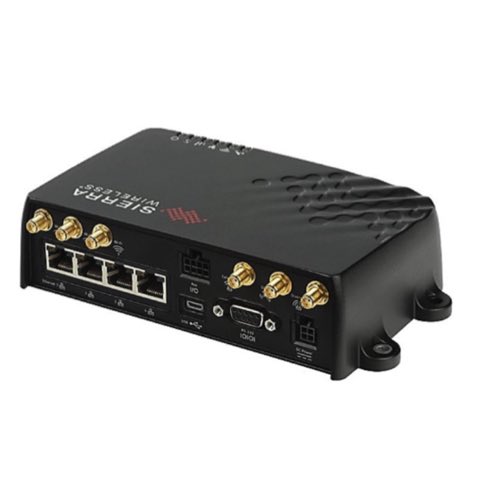MP70 Routers

Semtech MP70 Routers are a part of the esteemed AirLink series from Semtech, the MP70 is renowned for its robust functionality, high-speed LTE Advanced Pro connectivity, and hardened, rugged design, making it particularly suitable for demanding industrial and in-vehicle applications.
The MP70 is unique in its ability to provide high-performance vehicle connectivity. Designed for use in police vehicles, fire trucks, ambulances, public transit, and other field services applications, the MP70 provides unmatched, secure, and "always-on" connectivity. Its high-speed LTE-A Pro supports up to 300 Mbps downlink speed, ensuring rapid data transfers and smooth streaming of high-definition videos from multiple devices simultaneously, making it an indispensable tool in mission-critical communications.
More Information about Semtech MP70 Routers
In addition, the MP70 features the AirLink Management Service (ALMS), a cloud-based management platform by Semtech. This allows users to remotely monitor, manage, and troubleshoot MP70 devices irrespective of their geographical location. ALMS provides real-time analytics and reporting, which allows for proactive troubleshooting and quick resolution of any network issues, reducing potential downtime and ensuring continuous and reliable connectivity.
The Semtech MP70 router offers not just superior, high-speed connectivity but also embodies reliability, efficiency, and a robust return on investment. With its ability to provide secure, persistent, high-bandwidth data connectivity, the MP70 is more than a piece of hardware; it's a vital partner for organizations operating in challenging environments. Its powerful capabilities enhance operational efficiency, making it a cornerstone in the world of advanced vehicle and industrial networking.
Basics of Switches, Routers & Hubs
Ethernet hubs, switches and routers connect computers to networks, devices and other computers.
Ethernet hubs are the least intelligent of the three devices. They simply take any message that is received and transmits it to every other device connected to that hub. For example, if CPU 1 on a network wants to send a message to CPU 5, it will send that message through the hub.The hub will then take that message and send it out to every connected device on that hub regardless of the intended target. When CPU 5 receives that message and wants to respond, it will send its response through the hub which sends it to every connected device. Ethernet hubs do not manage any data that is sent and tend to bog down networks. They also do not offer much security for the network. For these reasons, Ethernet hubs are are being replaced with network switches.
Switches transmit data from one device to another on the same network. Unlike a hub, switches use a switch table to learn where data came from and where to send it. Switch tables store Mac addresses and device ports. By storing this data, a switch can operate more efficiently than a hub, greatly reducing the traffic within the network.
Routers transfer data between devices while learning the location of those devices within the network. They are also a junction between two or more networks. An example of this would be a home router where the home network is connected to the Internet. Another example would be when the router connects two or more networks with different business functions. In addition to connecting two or more networks, a router offers important security features that help protect the network.

